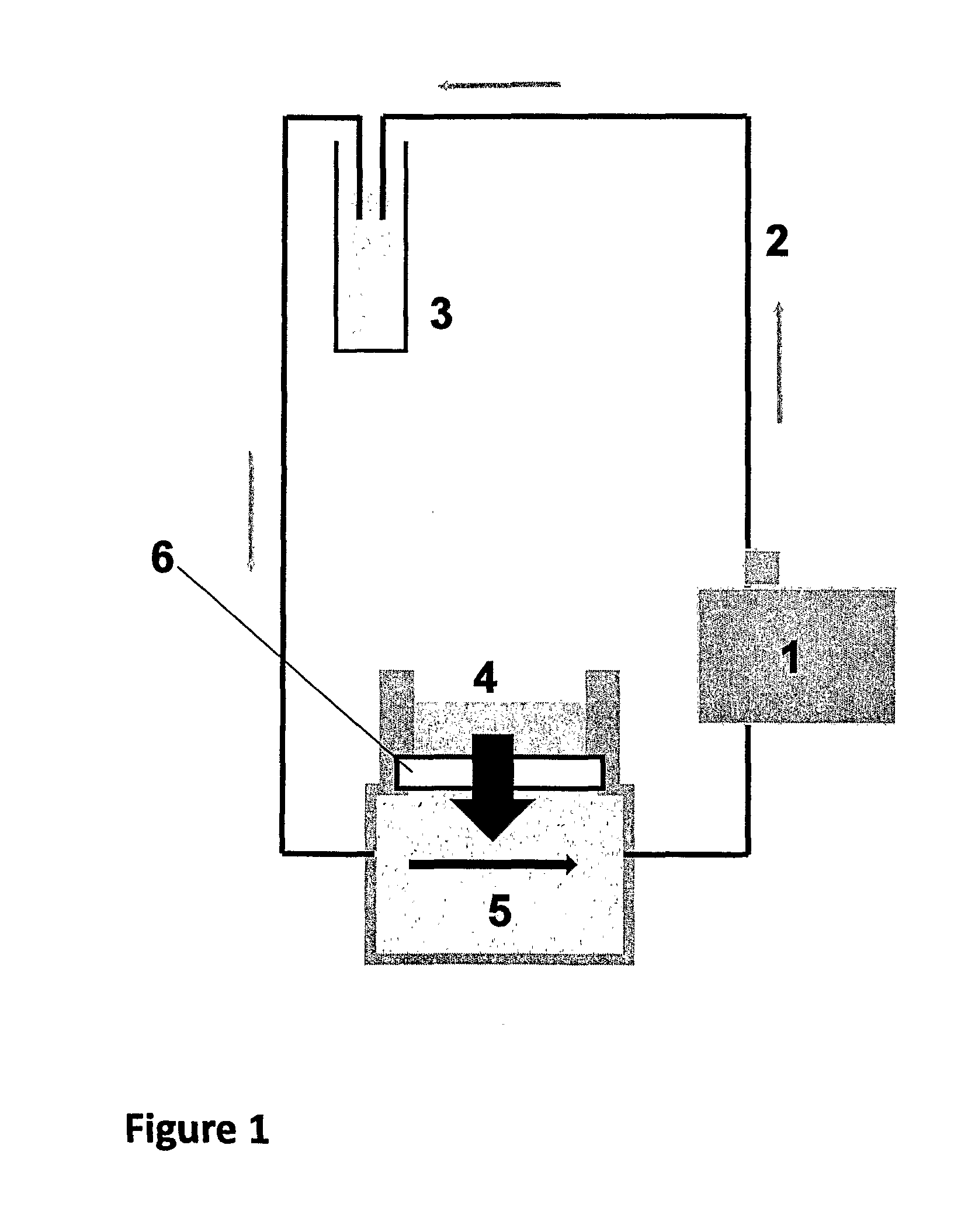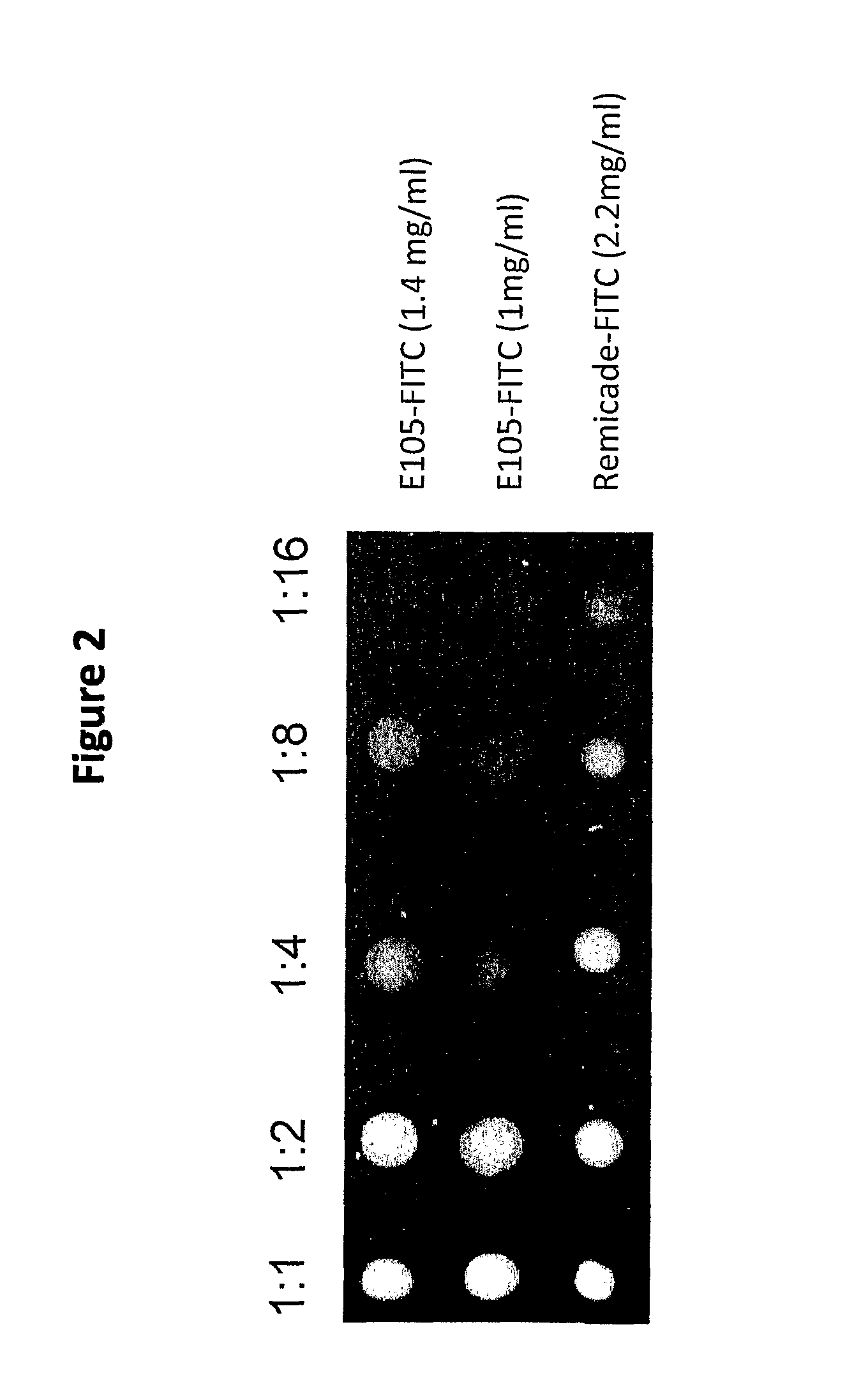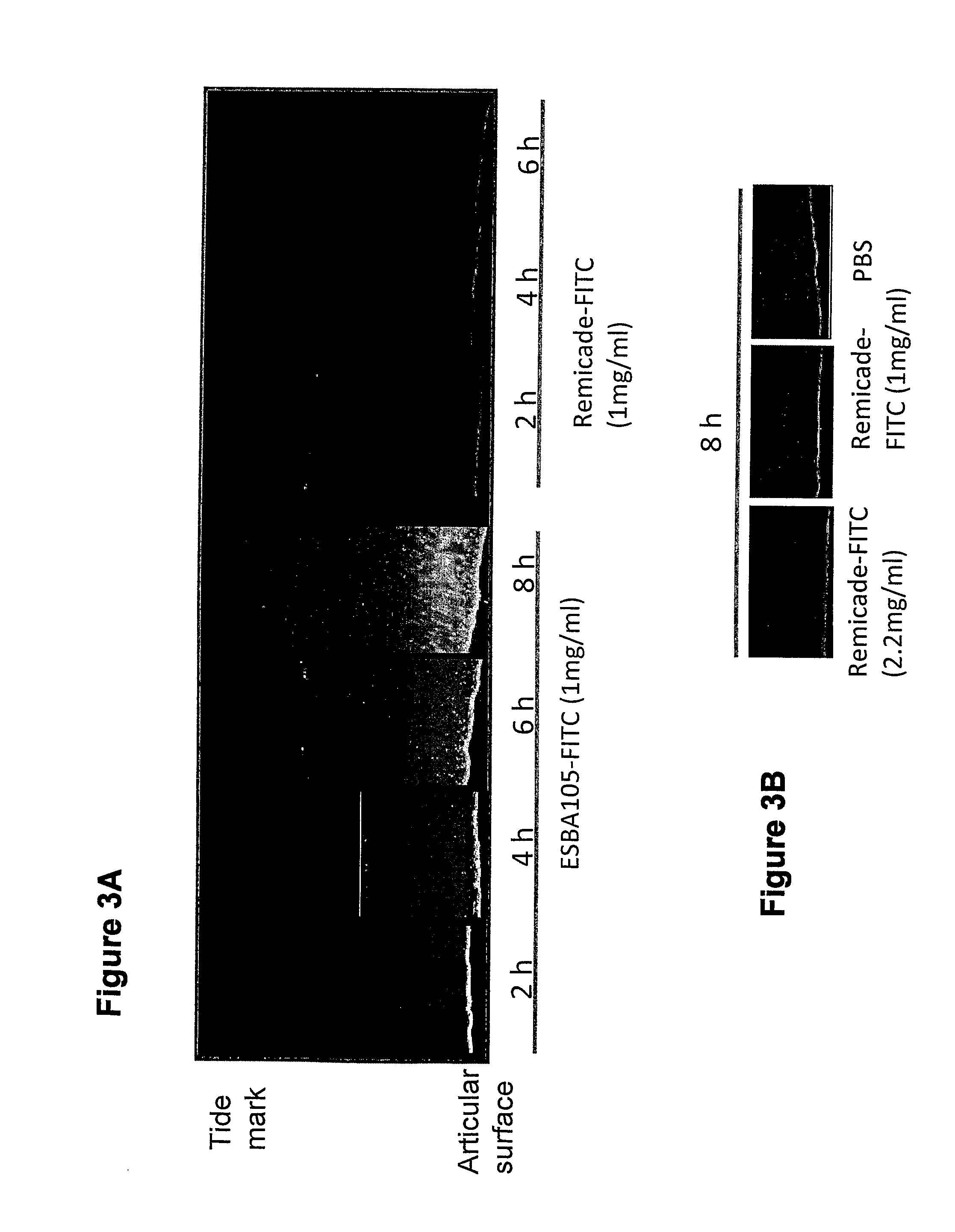Antigen-binding polypeptides against cartilage degeneration
a technology of anti-cartilage and anti-degeneration, which is applied in the direction of peptides, drug compositions, fused cells, etc., can solve the problems of less efficient cartilage binding by small cationic proteins, fissures, etc., and achieves the effects of reducing and/or inhibiting cartilage degeneration, enhancing cartilage retention time, and prolonging conta
- Summary
- Abstract
- Description
- Claims
- Application Information
AI Technical Summary
Benefits of technology
Problems solved by technology
Method used
Image
Examples
example 1
Size-Dependent Penetration of FITC-Labeled TNFalpha Antagonists into Bovine Cartilage
[0079]The aim of the experiment was to compare the ex-vivo cartilage penetration of the anti-TNFalpha single-chain antibody (scFv) ESBA105 (sometimes also referred to as E105 in the figures) with the full-length anti-TNFalpha antibody infliximab.
[0080]Materials and Methods
[0081]ESBA105 was produced as described in WO08 / 006,235. Infliximab / Remicade® was purchased in an official Swiss pharmacy.
[0082]Cartilage preparations were dissected from bovine femur (freshly obtained from a slaughterhouse) and mounted in a corneal perfusion chamber as schematically depicted in FIG. 1). The cartilage layer that is naturally exposed to the synovial liquid was exposed to 300 mcl of FITC-labeled antibody solution. The tested concentrations of FITC-labeled antibodies in PBS buffer pH 7.4 were 1 mg / ml for E105-FITC and 1 mg / ml and 2.2 mg / ml, respectively, for Infliximab-FITC. The total fluid volume that circulated thro...
example 2
In Vivo and Biodistribution Studies
[0089]Materials and Methods
[0090]TNF-α inhibitors. ESBA105 was expressed in to and purified from E. coli as described and used in 25 mM sodium phosphate pH 6.5. Infliximab (Remicade®) and etanercept (Enbrel®) were purchased in a local pharmacy.
[0091]TNF-α induced apoptosis in cell culture. Mouse L929 fibroblasts between passages px6 and px15 were seeded in 96-well plates (167008, Nunc, Langenselbold, Germany) in 100 μl assay medium (phenol red-free RPMI with L-Glutamine+5% FCS) to a cell density of 20,000 cells / well. Cells were incubated overnight at 37° C. and 5% CO2. On the following day agonist-inhibitor mixtures containing recombinant human rhTNF-α (300-01A, PeproTech, London, UK) and varying amounts of ESBA105 or infliximab were prepared and incubated for 30 minutes at ambient temperature. Fifty μl of agonist-inhibitor mixtures (final rhTNF-α concentration 100 pg / ml) were given to cells subsequent to the addition of 50 μl of actinomycin D (fin...
example 3
Effect of the TNF Inhibitory scFv ESBA105 on Biomarkers Related to Osteoarthritis in Human Articular Cartilage Explants from OA Patients
[0113]Methods
[0114]Study Outline and Cultivation of Human Cartilage Explants
[0115]The effect of ESBA105 on human knee articular cartilage explants from eight osteoarthritic donors on the activity of matrix metalloproteinases (MMP) and the production of PGE2 was assessed.
[0116]Human cartilage from eight different donors, suffering from knee OA, was obtained at joint replacement surgery. Groups of eight cartilage replicates from each donor were cultured in a total of three different test conditions (unspecific scFv framework of ESBA105 (FW2.3) and two different concentrations of ESBA105, see also table 3).
[0117]Full depth 3 mm diameter cartilage punches were obtained from the knee joint of patients undergoing total knee arthroplasty (TKA). The cartilage punches were weighed and brought into culture. Punches were cultured in 96-well plates each well co...
PUM
| Property | Measurement | Unit |
|---|---|---|
| Fraction | aaaaa | aaaaa |
| Fraction | aaaaa | aaaaa |
| Solubility (mass) | aaaaa | aaaaa |
Abstract
Description
Claims
Application Information
 Login to View More
Login to View More - R&D
- Intellectual Property
- Life Sciences
- Materials
- Tech Scout
- Unparalleled Data Quality
- Higher Quality Content
- 60% Fewer Hallucinations
Browse by: Latest US Patents, China's latest patents, Technical Efficacy Thesaurus, Application Domain, Technology Topic, Popular Technical Reports.
© 2025 PatSnap. All rights reserved.Legal|Privacy policy|Modern Slavery Act Transparency Statement|Sitemap|About US| Contact US: help@patsnap.com



